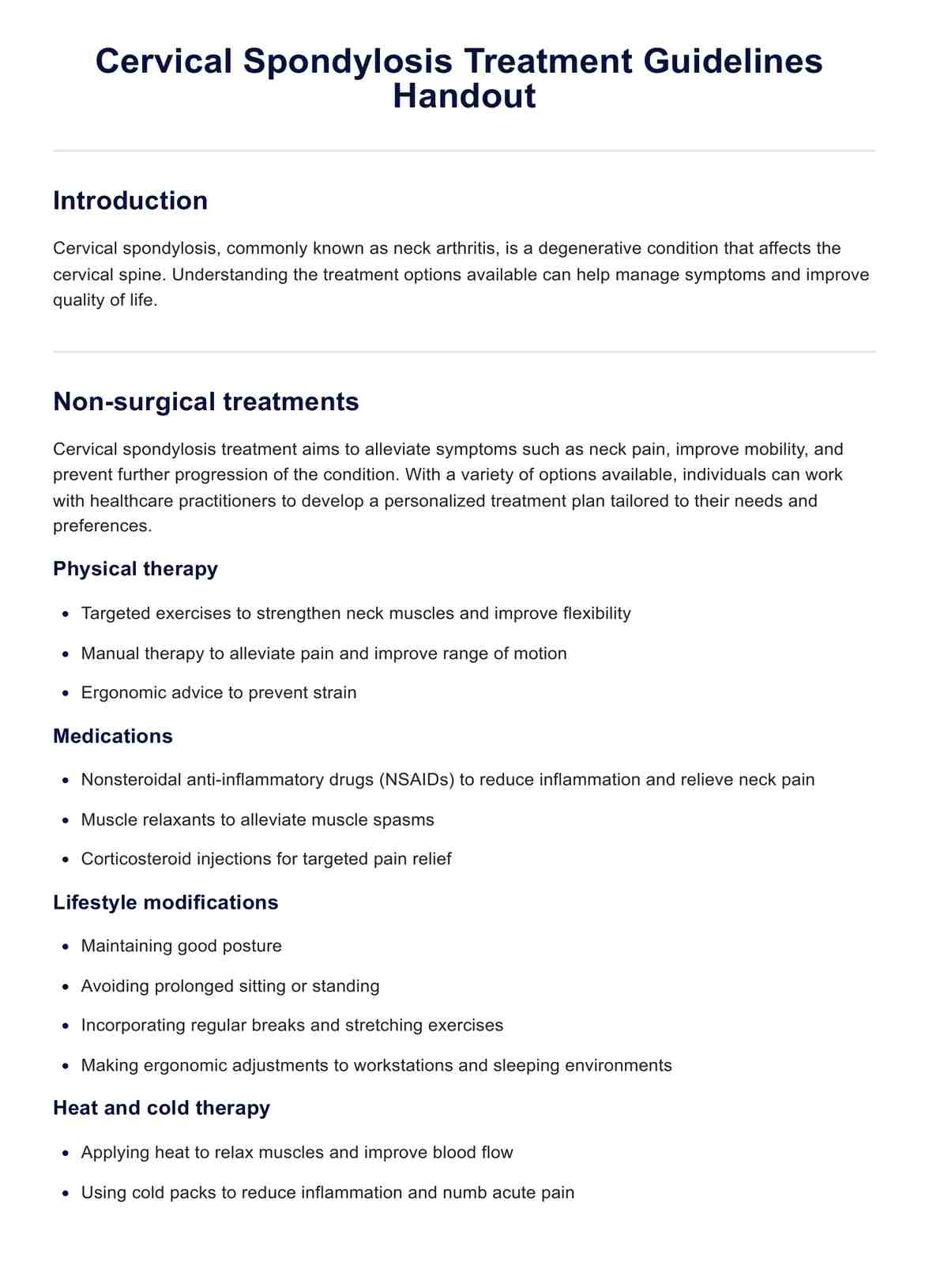The best cervical spondylosis treatment typically includes a combination of PT, medications such as nonsteroidal anti-inflammatory drugs (NSAIDs), and lifestyle modifications to manage symptoms and improve neck mobility. In severe cases, surgical intervention may be necessary to relieve spinal cord or nerve root compression.

Cervical Spondylosis Treatment Guidelines Handout
Download Carepatron's free PDF handout featuring guidelines and examples for the treatment of cervical spondylosis. Learn more about effective treatment options for this condition.
Cervical Spondylosis Treatment Guidelines Handout Template
Commonly asked questions
The worst symptoms include severe neck pain, cervical radiculopathy causing pain and numbness in the arms, and cervical spondylotic myelopathy, which can lead to loss of coordination, weakness, and bowel or bladder control issues.
Avoid activities that strain the neck, such as heavy lifting or prolonged periods of looking down at a screen, as they can exacerbate symptoms. Refrain from poor posture and sudden, jerky neck movements to prevent further neck injuries.
EHR and practice management software
Get started for free
*No credit card required
Free
$0/usd
Unlimited clients
Telehealth
1GB of storage
Client portal text
Automated billing and online payments











